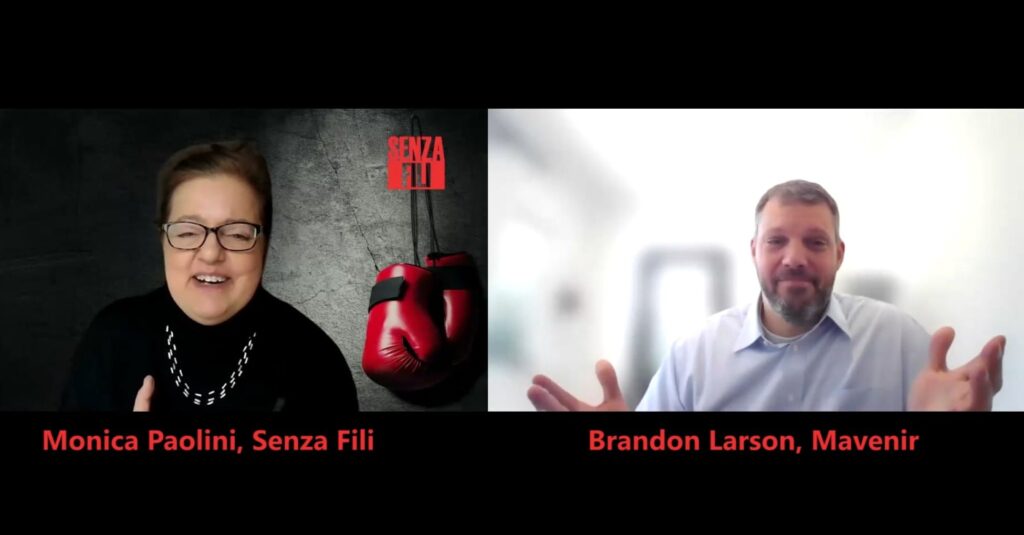The Future Network Is Open and Autonomous

A conversation with Brandon Larson, SVP, GM, Cloud, AI & IMS at Mavenir
Wireless networks are moving towards openness and autonomy at the same time. This is not happening by coincidence. The two trends are interrelated and enable and drive each other.
The scope of the transition to open networks goes beyond Open RAN. It includes virtualization, open interfaces beyond fronthaul, end-to-end disaggregation, a multi-vendor ecosystem, digitalization, cloud/edge infrastructure, public and private networks, and probably a few more elements. This translates in higher complexity and creates an urgent need for automation and eventually, autonomy.
The path to autonomous networks also goes beyond off-the-shelf models—and certainly beyond GenAI, which is going to play a limited role in taking us to autonomy. It includes various flavors of AI and ML, digital twins, adversarial learning, taking us from supervised, open loop learning to unsupervised, closed loop learning.
In this Sparring Partners with Brandon Larson SVP, GM, Cloud, AI & IMS at Mavenir we spent an hour disentangling how AI and ML will accelerate—and indeed make possible—the transition to both autonomous and open networks.
Watch the full webinar:
Before you commit to watch the video or read the transcript, here are some of the takeaways from our discussion. However, if you want to understand how automation and autonomy differ, the different role that AI/ML play at different stages, and how GenAI relates to AI/ML head to the video or transcript.
The network openness that requires automation now and eventually autonomy is in the operational stack, where complexity is growing, and we need to manage it within an ecosystem of highly focused partners which bring their unique expertise. “Autonomous networks require a one-time integration effort. Once automation is put together, it will continue to create value by managing network complexity and delivering complex services. Autonomous networks are mainly about managing network complexity.”
“With AI and ML, we can reach an entirely different level of dealing with operational complexity. Automation can only take us so far without AI. If automation is like having a car, AI is like having a rocket ship.”
“AI and ML are about efficiency, achieving a higher level of operational capability as network complexity increases. They are not just about removing the human element; they are about figuring things out to make decisions in a more complex environment with a heterogeneous service demand.”
What does it take to get there? Technology is the foundation, but pulling together all the players, all the expertise, and all the organizational culture is crucial to success. And this is where Brandon sees Mavenir being able to pull all the parts together:
“Our partners have good expertise in what they do. No one knows servers better than Dell. Red Hat is very good when we get into the cloud stacks, manage upstream in a Kubernetes environment, or build a security platform.
At Mavenir, we put all this together with the hardware in the telecom environment because we appreciate the deeper nuances of a telco. To solve a problem in a telco, you need to understand that telco in depth. We bring in our telco domain experience. We understand that problem. We understand how it needs to be solved. And we understand the constraints around solving that problem.
Whether it is cloud technology or automation, we need to configure it, set it up, select the right components, and set the proper security policy to make it work for telco. Finding the solution requires a blending of minds and skill sets. And this is Mavenir’s role.
What is special about Mavenir? It all starts at the top, with our management’s commitment to openness. It is in our disruptive DNA to build software platforms using COTS hardware. We are not going to do everything ourselves; we are going to build a part of it and integrate it with other parts of the ecosystem. Part of the openness is the willingness to work with partners on a daily basis to solve problems and innovate in the telco space.
Our culture helps us get the value out of the cloud and AI. We bring cloud and data science people together and prevent them from talking past each other. This is always difficult, but we got the data scientists and the cloud scientists connected with their thinking process. And the same thing has to happen when you bring the operations guy into the room.
We have telco, cloud and data science expertise – all working on the same wavelength. When we achieve that, magic starts to happen. We bring all these cultures together; this allows us to think about problems in a different way and to start innovating.”
Brandon also called our attention to what AI/ML do beyond reducing human errors: allow us to find out things about our networks that we had not noticed before:
“To remove the human element from the operational process, we need to know where we want the network to be, how we want to evolve, or how we want to roll out new software. Automation makes things happen faster and reduces operational expenses. It removes the human error component, too. Humans are fallible and make mistakes. With automation, we can avoid an unintended customer impact. This is the automation value proposition.
AI and ML are pushing the operational envelope further, beyond what we can achieve with automation alone. When we add AI and ML, operations people can see things they could not see before. They may get a recommendation on how to tune a parameter in a way they have never had the insight to do before. We can get to a level of performance that was not achievable before.”
*Guest blog by Monica Paolini, Principal, Senza Fili
Sparring Partners – The Future Network Is Open and Autonomous



